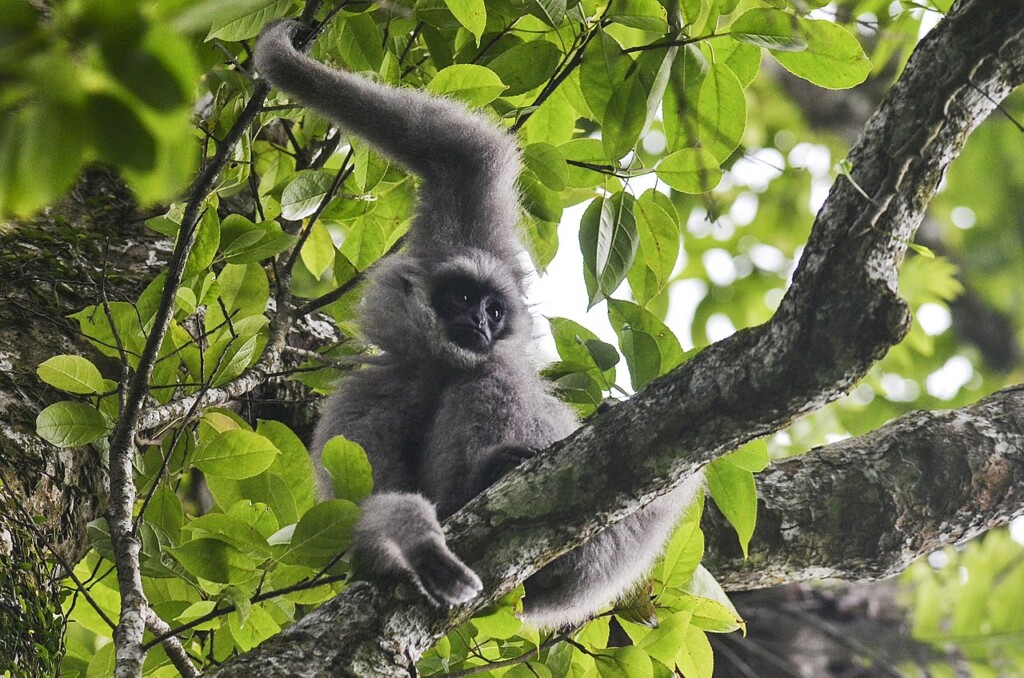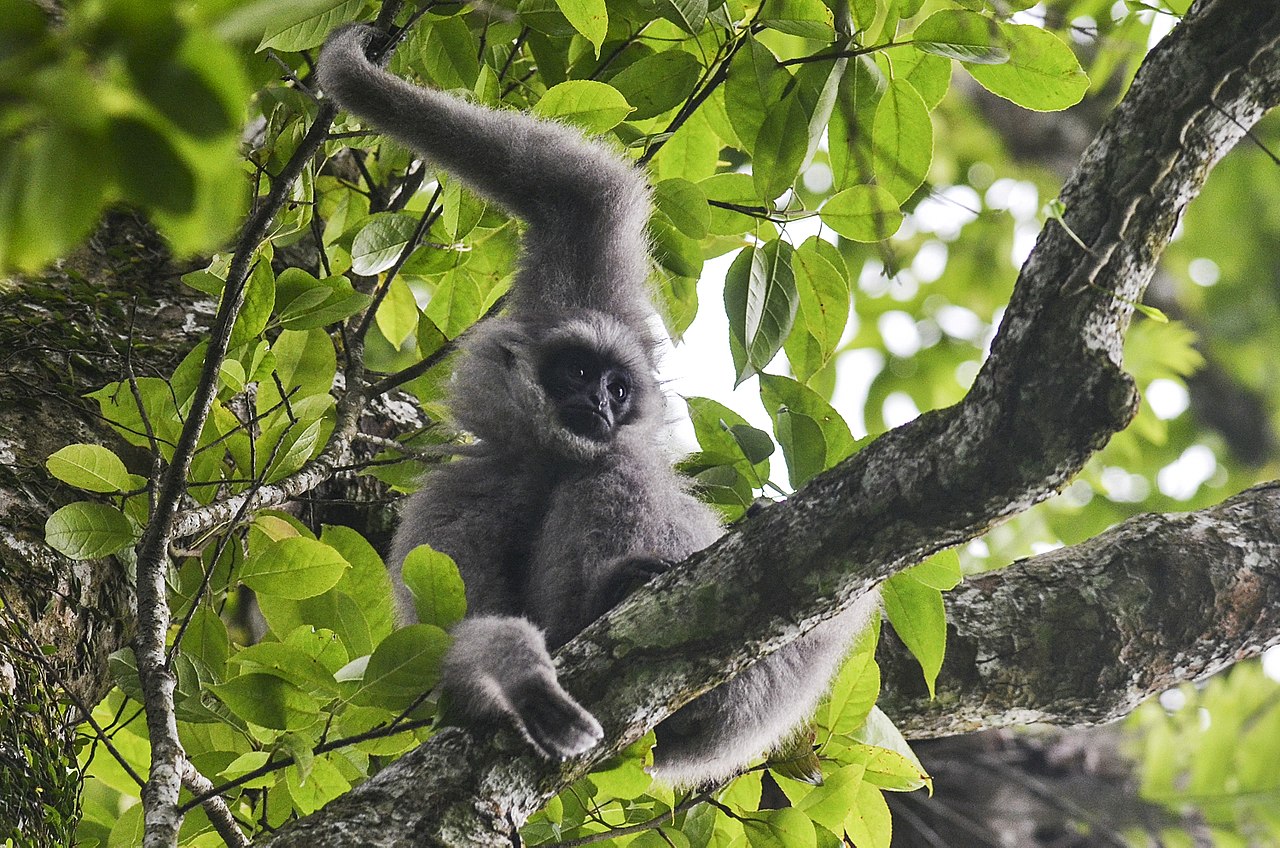
Reprinted with permission from World at Large, an independent news outlet covering conflict, travel, science, conservation, and health and fitness.
With so many of the world’s charismatic tropical animals fighting for conservation dollars, it’s easy for a small primate to slip through the cracks of international attention.
The silvery gibbon (Hylobates moloch) has relatively few backers compared with other jungle primates, but it has attracted interest from the International Union for the Conservation of Nature, who along with a generous donor in the Aspinall Foundation, are beginning to successfully rehabilitate silvery gibbons for release back into the wilds of Indonesia.
Classified as Endangered on the IUCN Red List, the gibbon can be found in protected areas and a group of slowly vanishing and isolated forests on the western side of the Indonesian capital island of Java.
Opening its doors in 2011, the Javan Primate Rehabilitation Centre (JPRC) located within Mount Tilu Nature Reserve has taken in 71 gibbons and managed to reintroduce 55 of them back into the wild.
Threatened by poaching for the illegal wildlife trade and deforestation, the population of silvery gibbons may be as low as 2,500, and with such levels of scarcity, every individual counts.
Animals taken in at the JPRC might have been repatriated from zoos in other countries, rescued from poachers, or found by humans after having wandered into civilization. Once on site, a gibbon will receive a medical check to ensure they are free from disease before being placed in large enclosures where they can practice all the gibbon skills they’ll need to survive in the wild.
The JPRC has a site within Mount Tilu where they release the gibbons, and it’s also the site of the beginning of a daily quest to locate the newly-released gibbons and monitor them. The monitoring team is responsible for observing and recording the general behavior of the gibbons, which includes mapping their daily movements, what they eat, how they interact with other gibbons, sounds and gibbon calling.
“I am happy to see that the rehabilitated gibbons have adapted well to the forest after being released into the wild and some of them have already given birth to new baby gibbons,” Yana, a monitoring and community forest ranger at the Mount Tilu NR, told the IUCN press.
The JPRC, the IUCN, and Aspinall Foundation see the program continuing on to better and better outcomes over the next few years.
Not all gibbons are so lucky, and other, even more local efforts to support these beautiful primates rely on borrowed time and the caring nature of certain individuals.
Not a ‘sexy species’
Tini Kasmawati, in the 141-square-kilometer Lengkong district, volunteers her time to deliver bananas to an isolated gibbon population that doesn’t have enough forest left to find sufficient food. The Wanicare Foundation, a Dutch, non-governmental and not-for-profit organization working in the area, is aware of Tini’s work, and while they told Reuters that her 8 years of self-funded efforts haven’t changed the gibbon populations, she may have helped them survive in certain fragmented areas.
Wanicare is one of the few organizations that support silvery gibbons, and the Cikananga Wildlife Center in Lengkong began its gibbon program in 2012 when the conservationists there received five of the animals that had been seized from poachers.
“We did a lot of research to see if we could find a solution in this area, for example with corridors and everything, to connect different forest patches so at least they could go around,” Willemijn Eggen, founder and board member of the Wanicare Foundation, told WaL. “In our opinion we should catch these gibbons and translocate them to another area”.
Establishments like the JPCR are exactly the sort of places that could help gibbons in isolated forest fragments like Lengkong find a more permanent home.
“In all Java, there are at least two good organizations that are working for the survival of the species,” says Eggen, but adds that Wanicare has to spread their budget over several different species, and that it’s difficult to isolate funding for the animal.
“For example with the Javan leopard, we call it a ‘sexy species’. It’s easy for a species like that to find funding then for example a slow lorry is [sic] not really sexy for most people, or a small bird, a lot of people are not interested in those species. An orangutan is interesting for people”.
In these cases, the best outcomes can often take place when the territory of one animal overlaps that of another which can drum up more international interest. WaL




















